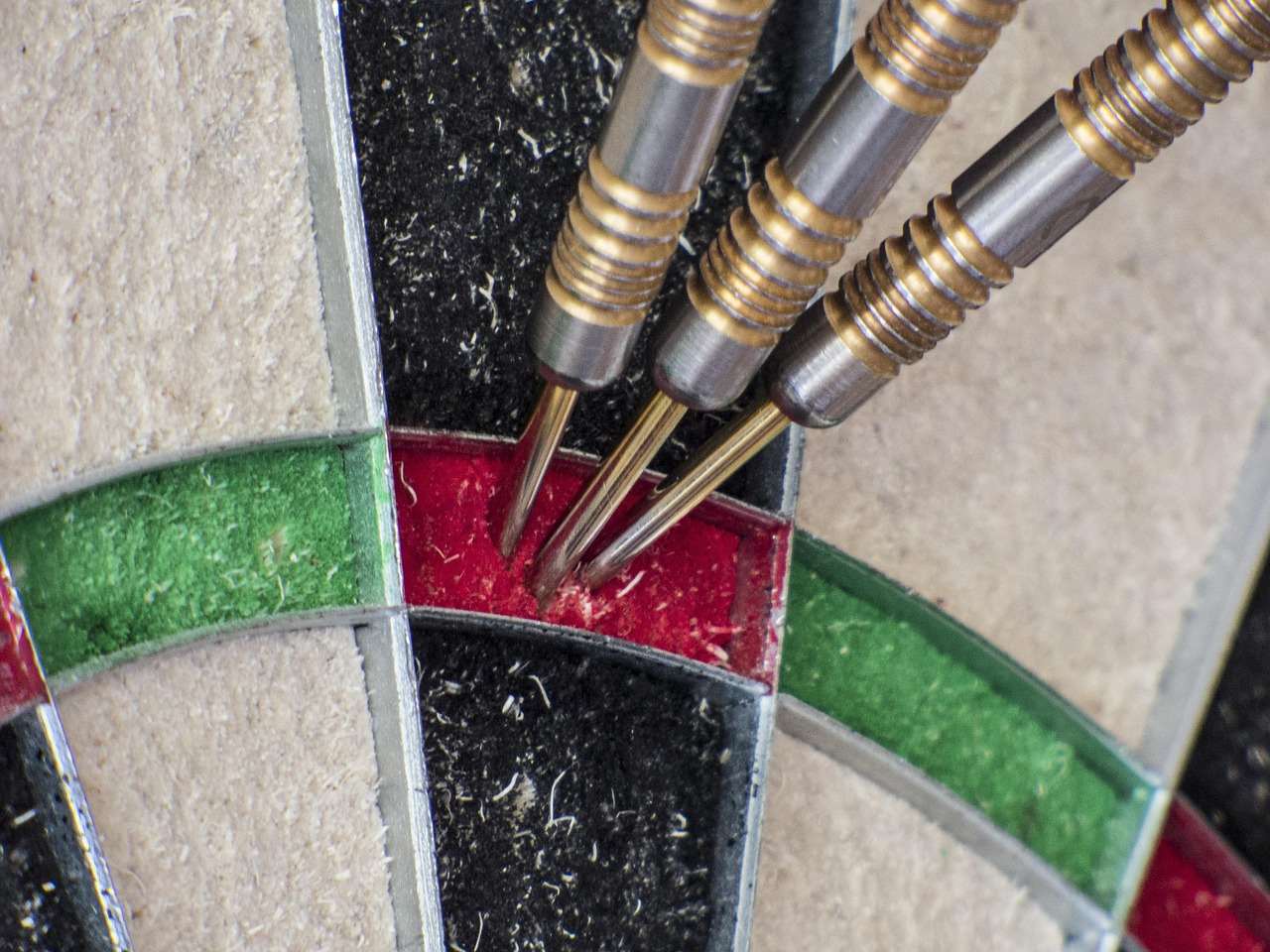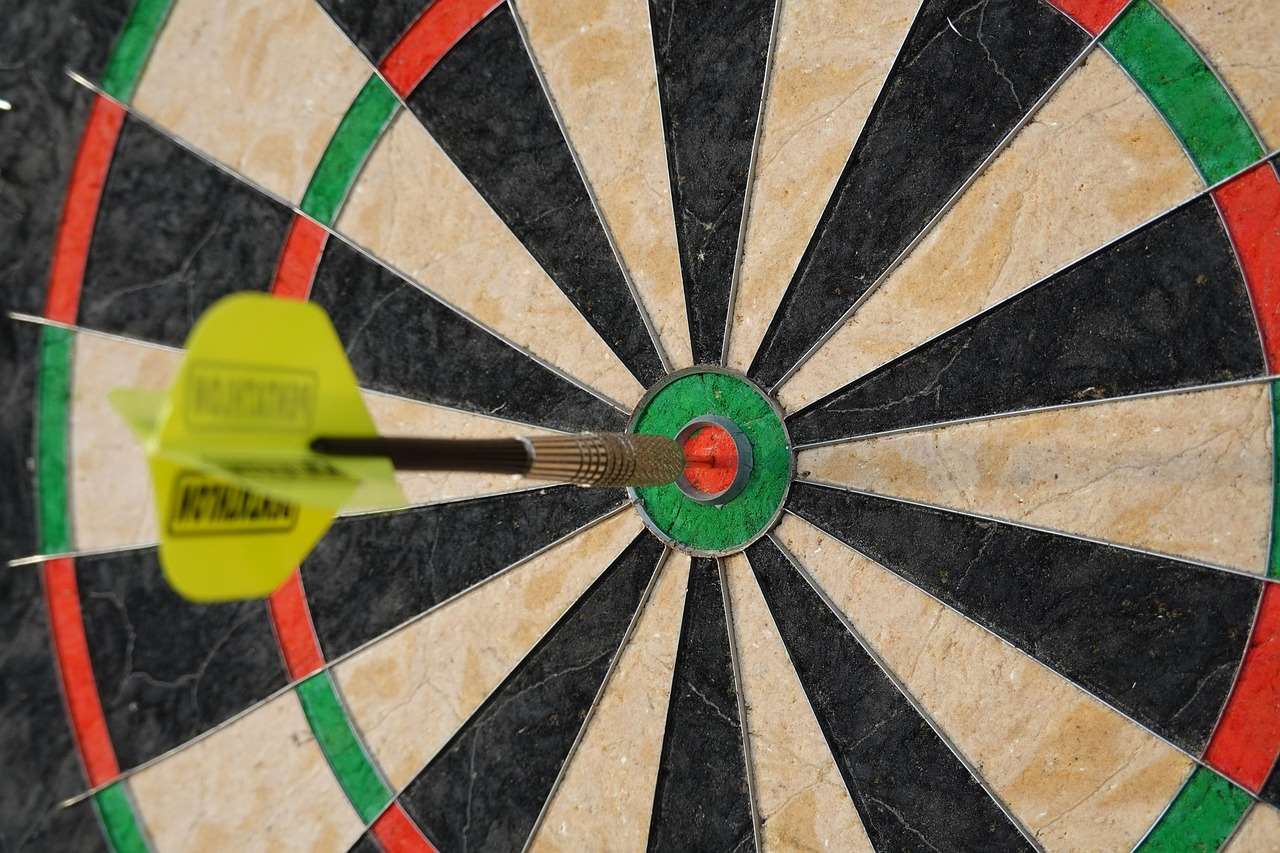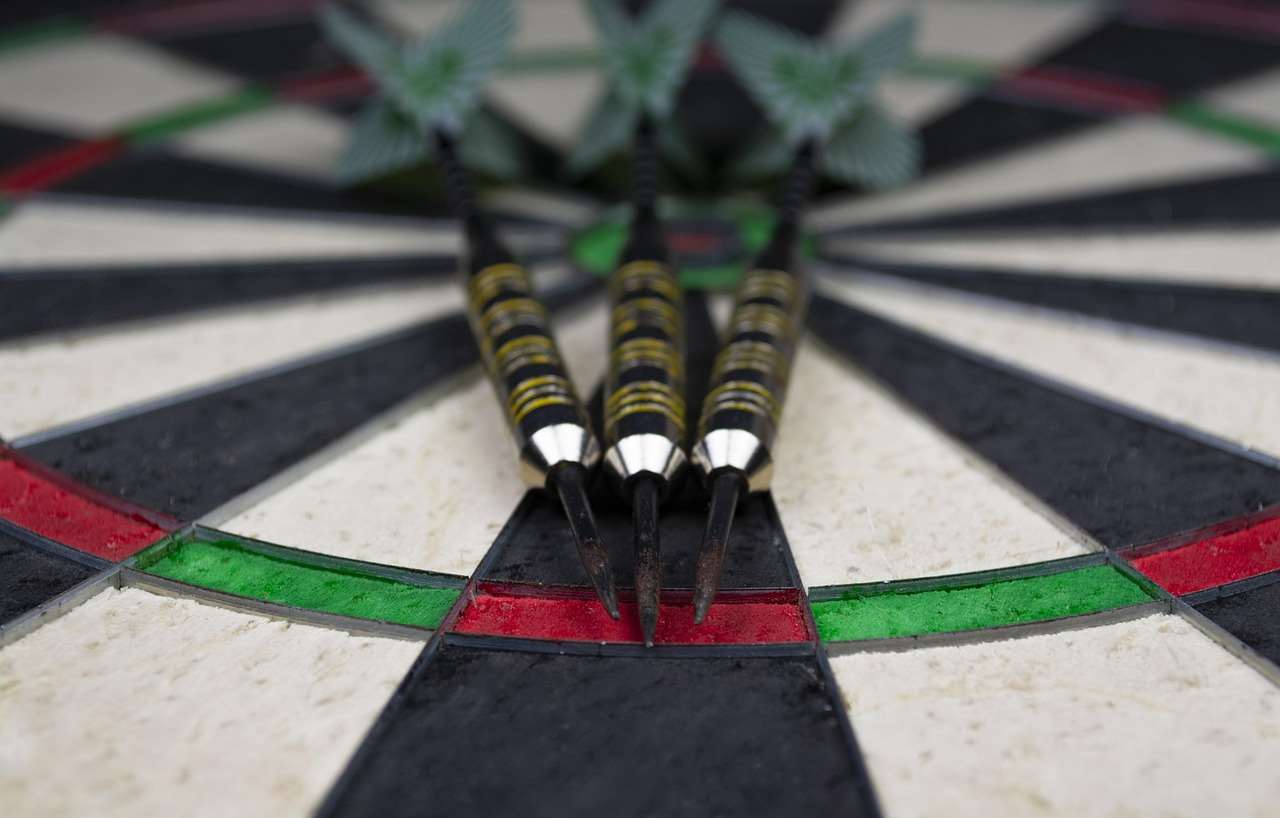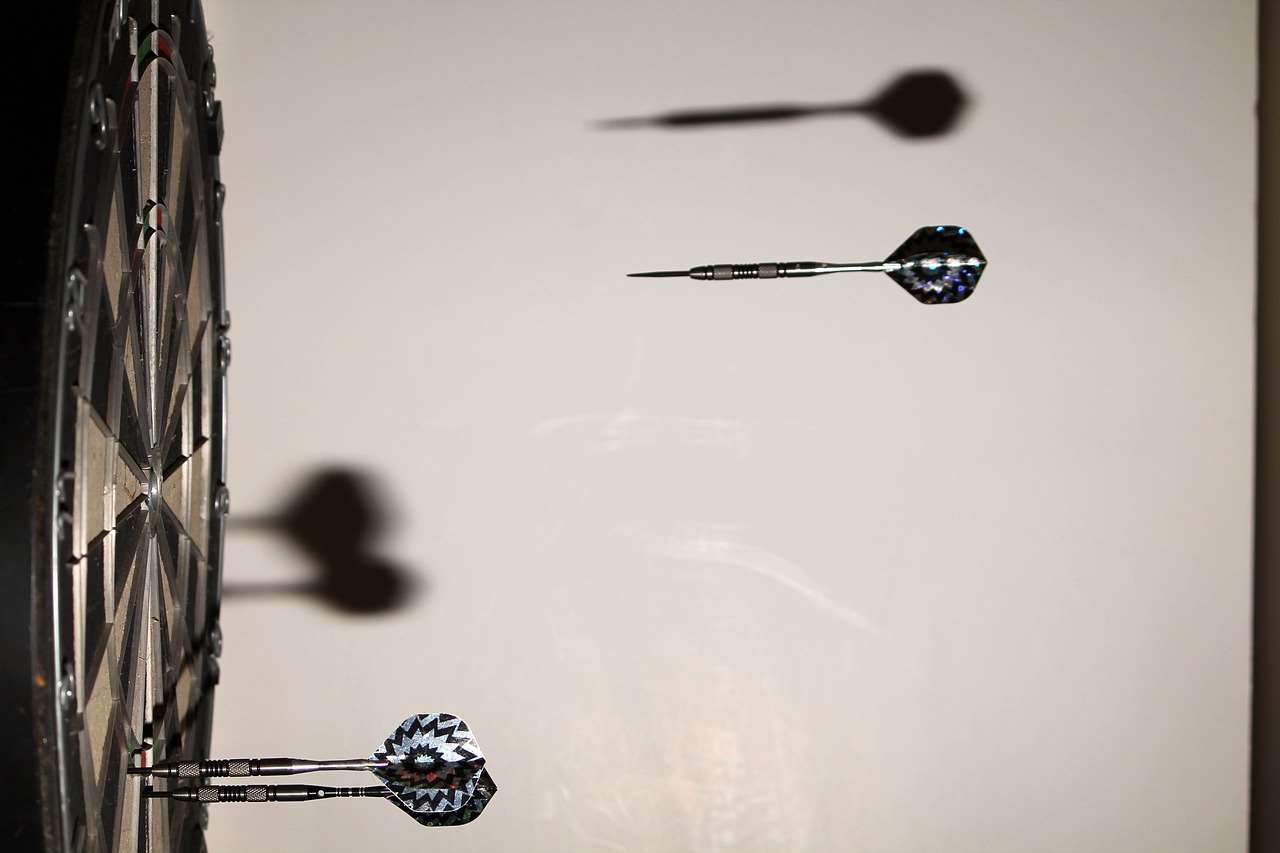Running a darts league can be incredibly rewarding, but it also comes with its own unique set of hurdles; successfully navigating these challenges ensures a thriving and enjoyable experience for all participants. This article dives into the common **challenges running darts league** face, offering actionable strategies for overcoming them and creating a vibrant darts community.
⚠️ Still Using Pen & Paper (or a Chalkboard)?! ⚠️
Step into the future! The Dart Counter App handles all the scoring, suggests checkouts, and tracks your stats automatically. It's easier than you think!
Try the Smart Dart Counter App FREE!Ready for an upgrade? Click above!
Understanding the Scope of Challenges Running Darts League
Before diving into specific solutions, it’s crucial to understand the various categories of challenges running darts league. These can range from logistical nightmares to interpersonal conflicts, and everything in between. Being prepared to address these issues proactively is key to long-term success.
- Logistical Challenges: Venue availability, scheduling conflicts, equipment maintenance.
- Administrative Challenges: Rule enforcement, data management, communication bottlenecks.
- Financial Challenges: Budgeting, fundraising, prize money distribution.
- Member-Related Challenges: Attendance issues, disputes, varying skill levels.
- Competition-Related Challenges: Fair play, handicapping systems, tournament organization.

Successfully mitigating these challenges requires careful planning, clear communication, and a willingness to adapt and learn from experience. Let’s explore some specific problem areas and solutions in more detail, starting with the crucial element of venue management.
Securing and Managing a Suitable Venue
One of the foremost challenges running darts league is finding a suitable venue. Factors to consider include:
- Location: Accessible to most members, with convenient parking or public transport.
- Space: Sufficient room for multiple dartboards, player seating, and scoring areas.
- Lighting: Adequate and consistent lighting for clear visibility of the dartboards.
- Amenities: Restrooms, refreshments, and possibly a bar area.
- Cost: Negotiating a reasonable rental agreement that fits within the league’s budget.
Consider approaching local pubs, community centers, or sports clubs about potential partnerships. A mutually beneficial arrangement can provide a stable home for your league while also driving business or community engagement for the venue. Remember to document the agreement clearly to avoid future disputes.
Once you have secured a venue, managing it effectively is vital. This includes scheduling matches to avoid conflicts, ensuring the space is clean and well-maintained, and addressing any issues promptly.
Addressing Member-Related Issues and Retention
Attracting and retaining members is essential for the long-term viability of any darts league. However, various member-related issues can pose significant challenges running darts league. Let’s look at some of these challenges and offer solutions. This is closely tied to Recruiting Members Darts League Club and making sure they want to remain.
Dealing with Attendance Problems
Inconsistent attendance can disrupt scheduling, create uneven matchups, and ultimately discourage other members. Implementing a clear attendance policy is crucial. This policy should outline:
- Expectations: How many matches players are expected to attend per season.
- Notification Procedures: How players should notify the league if they cannot attend a match.
- Consequences: What happens if a player consistently misses matches without proper notification. This might involve a warning, a fine, or even temporary suspension.
Consider offering incentives for good attendance, such as bonus points or eligibility for end-of-season awards. Furthermore, try to foster a sense of community and camaraderie within the league, making players feel like they are missing out on something when they don’t attend.
Resolving Disputes and Conflicts
Disagreements are inevitable in any competitive environment. Having a clear process for resolving disputes is vital for maintaining a positive atmosphere. This process should involve:
- Mediation: Encouraging players to resolve minor disputes amongst themselves, ideally with the help of a neutral third party.
- Rule Clarification: Ensuring that all players are aware of the league’s rules and regulations. If a dispute arises from a misunderstanding of the rules, provide a clear explanation.
- Escalation: Establishing a clear chain of command for escalating unresolved disputes to a league official or committee.
- Fair and Impartial Decision-Making: Making decisions based on facts and evidence, rather than personal biases.
Documenting all disputes and their resolutions is essential for maintaining transparency and accountability.

Managing Varying Skill Levels
Leagues often have members with a wide range of skills, from seasoned veterans to complete beginners. This disparity can create challenges running darts league, as it can lead to unbalanced matches and discourage less experienced players. Implementing a handicapping system can help to level the playing field and make the competition more enjoyable for everyone.
Common handicapping systems include:
- Averages-Based Handicaps: Calculating each player’s average score and adjusting their starting score or target score accordingly.
- Point-Based Handicaps: Awarding bonus points to weaker players at the start of each leg or match.
- Target-Based Handicaps: Requiring stronger players to hit higher checkout numbers.
It’s important to choose a handicapping system that is fair, transparent, and easy to understand. Regularly review and adjust the system as needed to ensure it remains effective.
Financial Management and Fundraising Strategies
Maintaining a healthy financial position is crucial for the sustainability of any darts league. However, managing finances and raising funds can present significant challenges running darts league.
Budgeting and Expense Tracking
Creating a detailed budget is the first step towards effective financial management. This budget should outline all anticipated income and expenses, including:
- Income: Membership fees, entry fees for tournaments, sponsorships, fundraising proceeds.
- Expenses: Venue rental, equipment purchase and maintenance, prize money, administrative costs.
Track all income and expenses meticulously, comparing actual figures to the budget on a regular basis. This will help you identify areas where you can cut costs or increase revenue.
Exploring Fundraising Opportunities
Relying solely on membership fees may not be sufficient to cover all expenses. Exploring various fundraising opportunities can help to supplement the league’s income. Consider the following options:
- Sponsorships: Partnering with local businesses to secure financial support in exchange for advertising or promotional opportunities.
- Raffles and Auctions: Organizing raffles or auctions with donated prizes to raise funds.
- Darts Tournaments: Hosting open tournaments with entry fees that contribute to the league’s coffers.
- Social Events: Organizing social events, such as quiz nights or themed parties, to raise funds and promote camaraderie.

Promote these fundraising activities effectively to maximize participation and generate more revenue.
Managing Prize Money and Payouts
Prize money is a key incentive for players to participate in tournaments and league matches. However, managing prize money and payouts requires careful planning and execution.
- Transparency: Clearly communicate the prize structure and payout percentages to all participants before the start of the competition.
- Secure Handling: Handle prize money securely and transparently, keeping accurate records of all transactions.
- Timely Payouts: Ensure that prize money is paid out promptly after the conclusion of the competition.
Consider using electronic payment methods for ease of tracking and disbursement.
Administrative Hurdles and Effective Solutions
Efficient administration is the backbone of a successful darts league. However, administrative tasks can be time-consuming and complex, posing significant challenges running darts league.
Streamlining Data Management
Managing player statistics, match results, and league standings manually can be cumbersome and prone to errors. Utilizing digital tools can significantly streamline data management and improve accuracy. Options include:
- Spreadsheet Software: Using spreadsheet software like Microsoft Excel or Google Sheets to track data and generate reports.
- Dedicated League Management Software: Investing in dedicated league management software that automates many administrative tasks, such as scheduling, scoring, and reporting.
Ensure that all data is backed up regularly to prevent data loss.
Improving Communication Channels
Effective communication is essential for keeping members informed about league news, schedules, and events. Consider utilizing a variety of communication channels, including:
- Email: Sending regular email newsletters to update members on important information.
- Social Media: Using social media platforms like Facebook or Twitter to share news, photos, and videos.
- Website: Creating a league website to serve as a central hub for information.
- Messaging Apps: Using messaging apps like WhatsApp or Telegram for quick and easy communication.

Establish clear communication protocols and respond promptly to member inquiries. This relates to Organizing Local Darts League and keeping everyone in the loop.
Ensuring Fair Play and Rule Enforcement
Maintaining fair play and enforcing league rules are crucial for ensuring a positive and competitive environment. This involves:
- Clear Rulebook: Developing a comprehensive rulebook that clearly outlines all rules and regulations.
- Consistent Enforcement: Enforcing the rules consistently and impartially, regardless of the player’s skill level or popularity.
- Designated Officials: Appointing designated officials to oversee matches and resolve disputes.
Provide training to officials to ensure they are knowledgeable about the rules and procedures.
These challenges running darts league are not insurmountable. Through careful planning, proactive problem-solving, and a strong commitment to creating a positive community, you can overcome these hurdles and build a thriving darts league that benefits all participants.
Leveraging Technology to Overcome Challenges
In today’s digital age, technology offers powerful solutions to many of the challenges running darts league. Embracing technology can streamline processes, improve communication, and enhance the overall league experience.
Here are a few examples of how technology can be utilized:
- Online League Management Platforms: These platforms offer a comprehensive suite of tools for managing all aspects of the league, from scheduling and scoring to member communication and payment processing. They provide centralized data management, automated reporting, and improved efficiency.
- Mobile Apps: Mobile apps can be used for real-time scoring, match updates, and communication. They allow players to track their stats, view league standings, and connect with other members on the go.
- Video Analysis Tools: These tools can be used to analyze players’ dart throwing techniques and provide personalized feedback. This can help players improve their skills and enhance their enjoyment of the game.
- Live Streaming: Live streaming platforms can be used to broadcast matches and tournaments to a wider audience. This can help to promote the league, attract new members, and generate revenue.
Investing in technology can be a significant upfront cost, but the long-term benefits in terms of efficiency, accuracy, and member satisfaction can be well worth it. This also helps Building Local Darts League Club Guide bigger and better.

Conclusion: Thriving in the Face of Darts League Challenges
Successfully navigating the challenges running darts league requires a multifaceted approach. From securing a suitable venue and managing member-related issues to handling finances and streamlining administration, each aspect demands careful consideration and proactive strategies. By implementing clear policies, fostering open communication, and embracing technology, you can create a vibrant and enjoyable darts community for all. Remember that the core of a successful league is a shared passion for the game and a commitment to fair play and sportsmanship. Don’t be afraid to adapt and evolve your strategies as needed, and always prioritize the needs and interests of your members. With dedication and perseverance, you can overcome these hurdles and build a thriving darts league that stands the test of time. Take the initiative to How To Start A Darts League or improve your current one today!
Hi, I’m Dieter, and I created Dartcounter (Dartcounterapp.com). My motivation wasn’t being a darts expert – quite the opposite! When I first started playing, I loved the game but found keeping accurate scores and tracking stats difficult and distracting.
I figured I couldn’t be the only one struggling with this. So, I decided to build a solution: an easy-to-use application that everyone, no matter their experience level, could use to manage scoring effortlessly.
My goal for Dartcounter was simple: let the app handle the numbers – the scoring, the averages, the stats, even checkout suggestions – so players could focus purely on their throw and enjoying the game. It began as a way to solve my own beginner’s problem, and I’m thrilled it has grown into a helpful tool for the wider darts community.